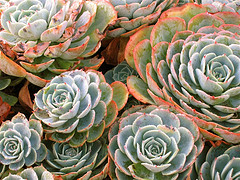Antimicrobial Herbal Drugs
Infectious diseases account for approximately one-half of all deaths in tropical countries. In industrialized nations, despite the progress made in the understanding of microbiology and their control, incidents of epidemics due to drug resistant microorganisms and the emergence of hitherto unknown disease-causing microbes, pose enormous public health concerns.
The whole 4 pages article is available for download here.
ANTIMICROBIAL HERBAL DRUGS
GUPTA PARAS 1*, KUMAR NAVEEN2 AND JAIN S. K. 1
1, Institute of Pharmay, Bundelkhand University, Jhansi, U.P.-India
2, Faculty of Pharmacy, Integral University, Lucknow, U.P.-India
* Corresponding Author
Introduction
Infectious diseases account for approximately one-half of all deaths in tropical countries. In industrialized nations, despite the progress made in the understanding of microbiology and their control, incidents of epidemics due to drug resistant microorganisms and the emergence of hitherto unknown disease-causing microbes, pose enormous public health concerns. Infectious disease is the number one cause of death accounting for approximately one-half of all deaths in tropical countries. Perhaps it is not surprising to see these statistics in developing nations, but what may be remarkable is that infectious disease mortality rates are actually increasing in developed countries, such as the United States.
Use of Plants as Antimicrobials
Plants have provided a good source of anti-infective agents; emetine, quinine, and berberine remain highly effective instruments in the fight against microbial infections. Phytomedicines derived from plants have shown great promise in the treatment of intractable infectious diseases including opportunistic AIDS infections. Plants containing protoberberines and related alkaloids, picralima-type indole alkaloids and garcinia biflavonones used in traditional of medicine. The drugs like Hydrastis canadensis (goldenseal), Garcinia kola (bitter kola), Polygonum sp., Aframomum melegueta (grains of paradise) will be used to illustrate the enormous potential of anti-infective agents from higher plants. Newer drugs such as Xylopia aethiopica, Araliopsis tabouensis, Cryptolepis sanguinolenta, Chasmanthera dependens and Nauclea species will be reviewed.
The whole 4 pages article is available for download here.

